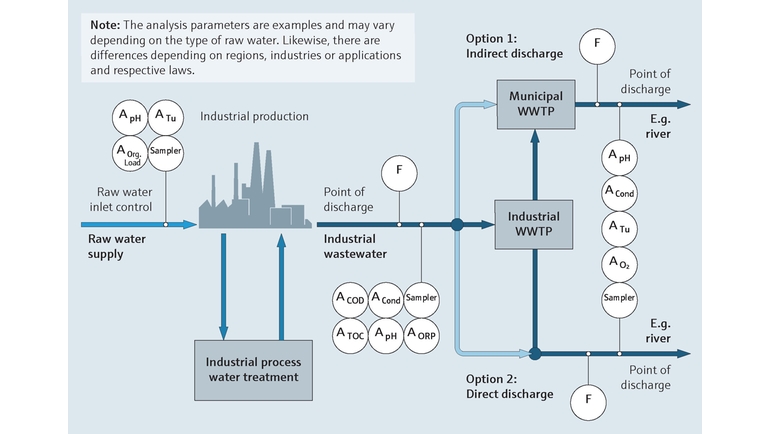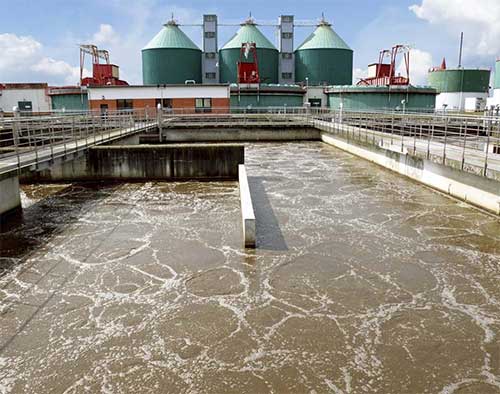Industrial Waste Water Treatment-- Sustainable Solutions for Industrial Water Administration
Wiki Article
Developments and Advances in Hazardous Waste Water Treatment Technologies
The landscape of industrial wastewater treatment is undergoing a transformative shift, driven by advancements that improve both performance and sustainability. As governing criteria advance, the assimilation of AI and machine learning into wastewater management systems promises to streamline operations and ensure conformity.Review of Drainage Therapy Technologies
Wastewater therapy innovations include a range of methods designed to get rid of impurities from commercial effluents before their release into the setting. These modern technologies are important for preserving environmental balance and guaranteeing compliance with ecological guidelines. The main categories of wastewater therapy consist of physical, chemical, and biological approaches, each offering distinct purposes based upon the nature of the pollutants present.

Biological treatment techniques use microorganisms to break down raw material, making them particularly efficient for organic-rich effluents. Strategies like activated sludge and biofilm reactors harness the natural deterioration capacities of microorganisms, leading to considerable decreases in biochemical oxygen need (FIGURE)
Advanced Purification Techniques
Advanced filtration methods represent an essential evolution in the realm of industrial wastewater treatment, enhancing the effectiveness of pollutant removal processes. Industrial Waste Water Treatment. These techniques include a variety of innovations, consisting of microfiltration, ultrafiltration, nanofiltration, and turn around osmosis, which supply consecutive obstacles for different bit dimensions and chemical structuresMicrofiltration and ultrafiltration utilize membrane layer systems to get rid of put on hold solids, bacteria, and larger organic particles, boosting the quality of effluent previous to more treatment. Nanofiltration links the space in between ultrafiltration and reverse osmosis, properly removing organic substances and divalent ions, hence reducing the tons on downstream procedures.
Reverse osmosis supplies the highest degree of purification by allowing only water and tiny particles to go through its semi-permeable membranes, making it excellent for redeeming top quality water from industrial effluents. Recent improvements in membrane layer technology, including the growth of even more fouling-resistant and sturdy products, have dramatically enhanced operational efficiency and lowered expenses.
Including these advanced filtering techniques not just enhances the general therapy procedure however also adds to sustainability initiatives by making it possible for water reuse and source recovery in industrial settings. (Industrial Waste Water Treatment)
Biological Therapy Developments

In addition, the development of engineered organic systems, such as membrane bioreactors (MBRs), integrates biological therapy with sophisticated membrane layer filtration. This integration permits greater effluent high quality and reduced footprint, making it suitable for space-constrained industrial centers. Developments in genetically engineered bacteria have actually additionally emerged, enhancing the biodegradation of specific contaminants, such as drugs and hefty metals, that are commonly challenging to eliminate.
In addition, the execution of bioaugmentation methods, where advantageous microorganisms are introduced to enhance the existing biological treatment procedures, has revealed appealing cause boosting treatment performance. These advancements jointly symbolize a pattern in the direction of more lasting and efficient organic treatment methodologies that can adapt to the evolving complexities of industrial wastewater streams. As industries proceed to prioritize ecological conformity, these organic advancements will certainly play a critical role in wastewater administration.

Source Recovery Techniques
In commercial setups, the assimilation of source recovery methods has come to be increasingly essential for boosting sustainability and lessening waste. These techniques focus on removing valuable products and power from wastewater streams, thus transforming prospective pollutants right into multiple-use sources.One famous approach is nutrient recovery, where nitrogen and phosphorus, commonly existing in excess in wastewater, are captured and converted right into fertilizers. This not only minimizes ecological impacts but additionally gives a round economy service for farming applications. Additionally, technologies such as anaerobic digestion enable the conversion of organic waste into biogas, a renewable energy resource that view publisher site can counter fossil gas usage in industrial procedures.
Moreover, advanced purification and membrane innovations promote the healing of commercial spin-offs such as metals and salts. These recovered materials can be rehabilitated right into production processes, reducing the requirement for virgin sources.
Future Patterns in Drainage Management
As markets progressively focus on sustainability, the future of wastewater management is set to undertake significant improvements. Technical advancements, such as man-made knowledge and machine learning, will enable much more efficient tracking and management of wastewater systems. These innovations can anticipate maintenance requirements, maximize treatment procedures, and improve decision-making, ultimately minimizing operational costs and ecological influence.Furthermore, the integration of round economic climate concepts will play a critical role in wastewater monitoring. Industries are expected to shift in the direction of systems that not just treat wastewater but additionally recoup important resources, such as nutrients, water, and power. This shift will certainly decrease waste the original source and advertise the reuse of products, aligning with global sustainability objectives.
Emerging treatment techniques, such as membrane layer bioreactors and advanced oxidation processes, will certainly even more enhance the effectiveness of wastewater therapy, enabling higher quality effluents ideal for reuse. Furthermore, regulatory structures are likely to evolve, emphasizing more stringent requirements for wastewater discharge and motivating markets to take on ingenious therapy options.
Conclusion
In verdict, the development of commercial wastewater treatment technologies shows a considerable change towards boosted efficiency and sustainability. Technologies in advanced filtering techniques, organic therapies, and resource healing approaches highlight the industry's commitment to ecological stewardship. The Bonuses assimilation of synthetic knowledge and artificial intelligence additionally optimizes these processes, making certain regulative conformity and promoting a circular economic situation. Continued improvements in these locations will play a vital role fit the future of wastewater monitoring and protecting crucial water sources.The landscape of commercial wastewater therapy is undertaking a transformative change, driven by innovations that enhance both effectiveness and sustainability.Wastewater treatment innovations include an array of approaches made to get rid of contaminants from commercial effluents prior to their launch right into the setting.Harnessing the power of organic procedures has actually led to substantial technologies in the therapy of commercial wastewater.In addition, the execution of bioaugmentation approaches, where valuable germs are presented to improve the existing biological treatment processes, has revealed encouraging outcomes in enhancing treatment performance. These developments collectively signify a fad in the direction of more reliable and lasting biological treatment techniques that can adjust to the progressing complexities of industrial wastewater streams.
Report this wiki page